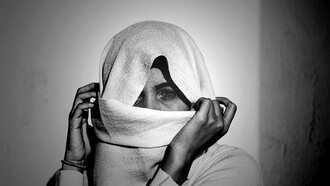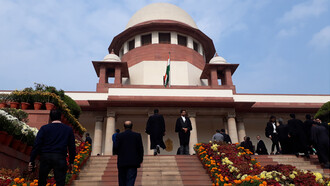Flags waving, drums pounding, and hearts pulsing to a single beat—the Indonesian Republic was turning 80. On August 17, 2025, Jakarta commemorated its 80th anniversary, showcasing the best of Indonesia's vibrant culture and unshakable spirit. From the dark times of foreign occupation to nascent democracy, Independence Day simultaneously serves as a celebration of Indonesia's newfound freedom and a painful reminder of the Dutch and Japanese powers that sought to bridle its sovereignty.
Since the declaration of independence on August 17, 1945, Indonesia has undergone a drastic social, political, and economic transformation. From Sukarno's "guided democracy" to Suharto's military dictatorship, before finally coming to terms with constitutional democracy at the end of the 1990s, the Indonesian nation has navigated tumultuous times. On the economic front, Indonesia is one of South Asia's fastest-growing economies, with a GDP consistently growing between 4 and 6 percent every year since 1998. Jakarta also went from being highly reliant on U.S. foreign aid to the 16th-largest economy in the world in the span of a few decades. At first glance, one might assume that the wave of reforms managed to permanently eradicate the vestiges of authoritarian rule.
Yet, beneath the surface, the country still grapples with systemic issues that act as tangible barriers to social and economic equality. In September 2024, Indonesia's Gini coefficient—an economic measure that quantifies inequality in a given space—stood at around 0.35, signaling a concentration of wealth in the hands of a small, fortunate group1. Undermined by a system that favors corruption and a poor distribution of wealth, the Indonesian democracy isn't faring any better. Freedom House, an NGO that assesses the evolution of democracy in the world, provides a bleak vision of Indonesian politics. In its 2025 report, the advocacy group deemed Indonesia to be "partly free," highlighting "systemic corruption, discrimination and violence against minority groups, conflict in Papua, and the politicized use of defamation and blasphemy laws."2
The election of Prabowo Subianto in October 2024, a seasoned member of the Indonesian political apparatus, did nothing to assuage these concerns. Campaigning on an ambitious foreign policy program, the newly elected president has neglected the issues close to his electorate. Merely one week after Independence Day, protests broke out throughout the archipelago after the publication of a report that revealed the allocation of a housing allowance to Indonesian MPs of a value equivalent to ten times the minimum wage earned in the capital city. Thousands of citizens took to the streets, anathematizing in unison the ''corrupted elites'' at the origin of their sorrows.
On August 29, the protests took a dramatic turn after a police van ran over Affan Kurniawan, a 21-year-old delivery driver caught in the commotion. His death sparked a rebellion in the country's major metropolises, where militants set fire to local parliaments and stormed public infrastructures3.
Characterizing a multidimensional societal movement
In essence, the current conflict acts as a catalyst for a wide array of socioeconomic and political demands coming from a population that has been consistently excluded from reaping the rewards of sustained economic growth. The attribution of the housing allowance (of approximately 50 million rupiah, or 2,550 euros) to an already privileged caste is symptomatic of the larger issues at hand: rampant corruption and debilitating inequality.
In almost a year at the helm of the country, Prabowo Subianto's track record is relatively distressing. Following an unexpected reduction of the 2025 national budget by about 8.5 percent, the Prabowo administration substantially cut into the budget allocated to key ministries such as public infrastructure, natural disaster management, and children's welfare. This set of reforms occurs at an inopportune time of intensified institutional disputes, as the central government pushes local governments to diversify their revenue streams and rely less on the national budget to enforce their programs.
Designed to fund Prabowo's campaign promise of a free meal program, as well as a sovereign wealth fund (named Daya Anagata Nusantara, or "Danantara"), these austerity measures have garnered severe criticism from the opposition4. In focus, it is the lack of a constitutional or legal framework to supervise what could be South Asia's largest sovereign fund that raises corruption concerns in a government that has yet to take any preventive action in the matter.
Altogether, it is a growing sense of discontent towards a privileged politico-administrative apparatus that characterizes the current movement. From the housewife to the local artisan and the high school student, various fringes of Indonesian society have mobilized to express their anger at a rather impassive and unemotional government. Much like the nature of the movement, its demands are plural: youth unemployment, environmental protection, the growing role of the military in domestic politics, and a worrying poverty rate are only a few of the Indonesian people's exigencies.
In social movements where local and disparate demands merge into a national cause, symbols bear a dual power: to grow the ranks of the movement and to unite all participants under a single banner. One Piece's imagery of camaraderie and freedom acts as the perfect crest to symbolize the protesters' ire and fight for a more equal society.
The Jolly Roger, a common banner for a variety of social demands
A golden age of piracy, a hidden treasure, and a global race to find it: these are some of the key features of the fantastical world of One Piece, a manga imagined by Eiichirō Oda. Published since October 20, 1999, the story focuses on Monkey D. Luffy, an eccentric teenager who obtained the uncanny ability to stretch his own body at will after eating one of the famed "devil fruits." Throughout his adventures, the boy gathers a crew of misfits, successively liberating them from their oppressors. The ''Straw Hats," named after the captain's infamous headpiece, sail the seas, uncovering the world's beauties and shadows as they make their way to the last resting place of the former King of the Pirates: the island of Laugh Tale (or “Raftel”).
Now, the Straw Hat crew's adventures may seem at odds with the atmosphere of civil unrest that has shaken Indonesia in the past month. Yet, within the crowds that unfurled throughout the archipelago, many were the ones who brandished the skull flag popularized by the anime. Much like any other form of art, manga can be political. The plot of Attack on Titan is, for instance, awfully reminiscent of the darkest times of our history, showcasing the rise of authoritarianism and nationalism. In another vein, manga like The Promised Neverland clearly illustrate a clearly defined social class system, where a privileged group preys on vulnerable individuals. Whether M. Oda intended to embed a political subtext within his masterpiece remains beside the point: viewers identify with the interpretation that most corresponds to their particular worldview.
In One Piece, the World Government, embodied by the Navy, represents a paragon of virtue, whose sole mission is to protect honest citizens from the “vile” pirates. But as the story progresses, the Navy's moral compass slowly falls apart as its members display increasingly cruel and apathetic behaviors. In the narrative, the main characters prove to be a cure to that plague, overthrowing dictatorships and putting an end to firmly rooted oligarchies along their journey. This story resonates deeply with the Indonesian youth, for whom One Piece is simultaneously an integral part of pop culture and a great example of civil liberation and anti-corruption.
One Piece's symbolism does not, however, limit itself to the Indonesian case. The infamous flag has also been photographed in other countries shaken by civil unrest and public discontent, such as Nepal, where a corrupted elite was ousted by a disgruntled population, and France, where the country ground to a halt in early September after a nationwide strike movement5.
In conclusion, One Piece's global media presence makes it a powerful conveyor of humanist values such as social justice, human dignity, and the respect of human rights. From the inked page to the international stage, characters and militants alike stand against the firmly entrenched power systems that seek to subdue them. Within the crowds, the Jolly Roger transcends its unassuming origins, standing proudly as an emblem for self-determination. So long as injustice endures in our crooked world, this symbol will continue to rise, claiming its rightful place among the people fighting for their freedom.
References
1 World Bank. (n.a). "Gini Index—Indonesia."
2 Freedom House. (2025). "Country Report: Indonesia".
3 Al Jazeera. (August 29, 2025). "Protests resume in Indonesia’s Jakarta after ride-share driver killed."
4 Kurlantzick, J. and McGowan, A. (March 26, 2025). "Indonesia’s Prabowo Is Stumbling Out of the Gate."
5 Matthews, B. (September 24, 2025). The flag from the Japanese comic 'One Piece' is used as a protest worldwide. The Washington Times.















